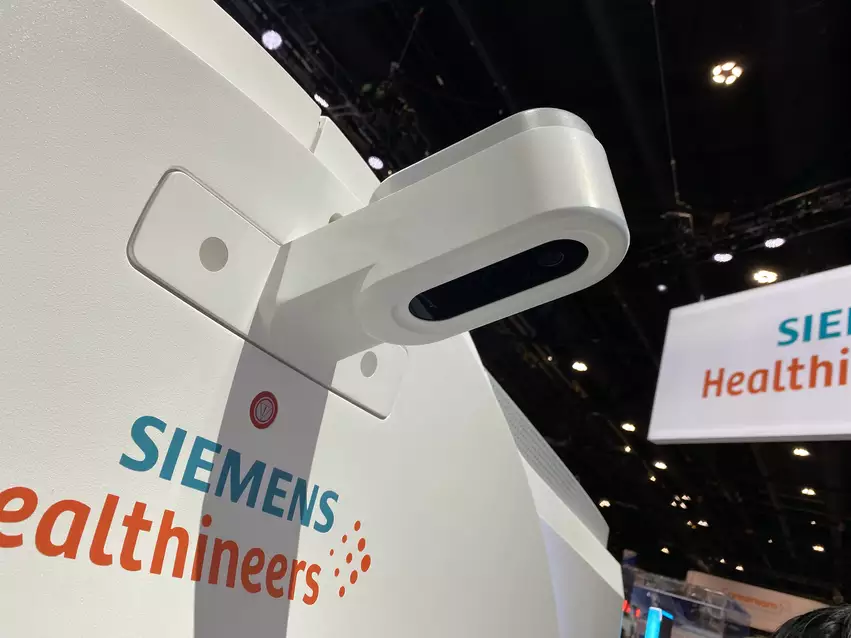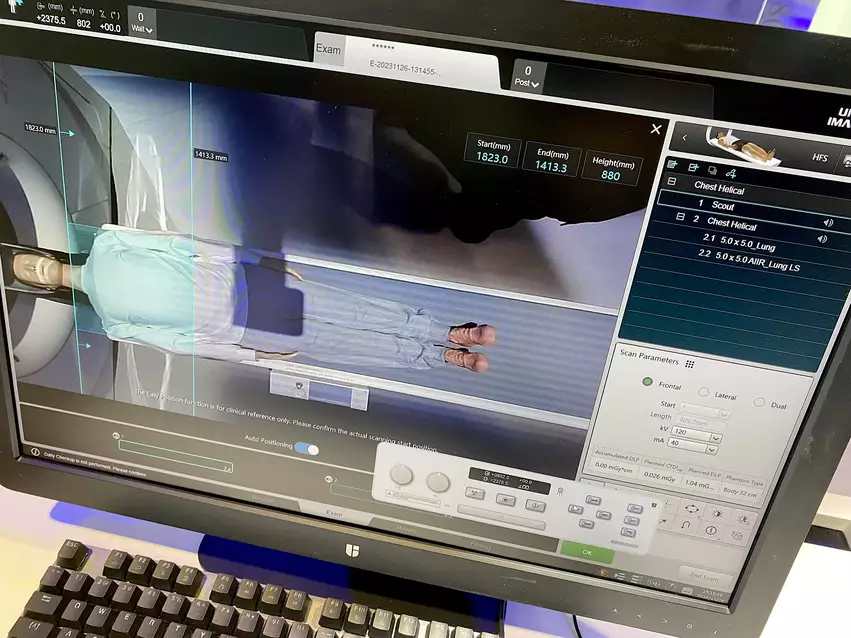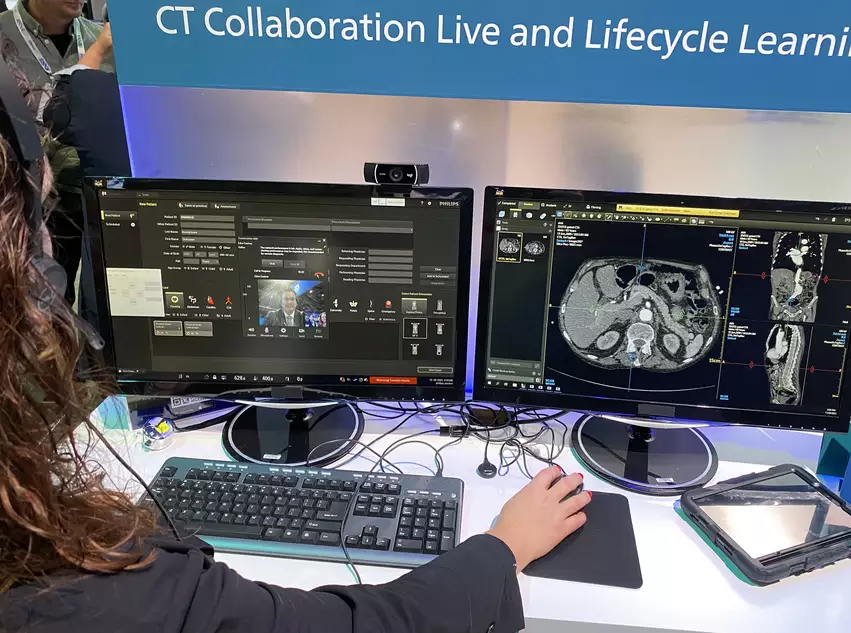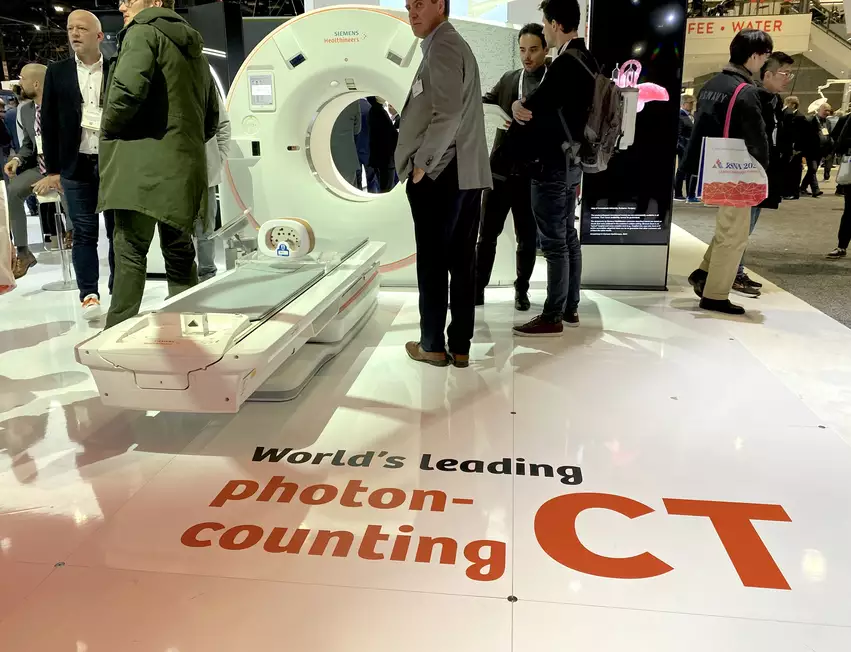Trends and advances in CT systems at RSNA 2023
The Radiological Society of North America 2023 meeting is the epicenter for unveiling the latest innovations in computed tomography. Large vendors launched four new workhorse CT systems at the meeting and new technologies, especially in artificial intelligence and remote tech assistance, were shown by all CT exhibitors.
Radiology Business compared notes on trends and new CT technologies at RSNA with Bhvita Jani, a principal analyst in medical imaging at Signify Research. She shared valuable insights on the shifts and advancements witnessed in CT.
CT sales saw a slump in 2021 due to COVID, Jani said, but there is now a rebound of at least 6% to 10% over 2022 figures. This is being driven partly by a growing technologist shortage and a desire to alleviate burnout from repetitive tasks, which AI can automate. The need for both lower-dose CT replacement systems and new types of imaging capabilities, especially in cardiac care, also are fueling a rebound in CT interest, Jani noted.
Elevated focus on coronary CTA
One of the notable trends observed in the CT market was the heightened emphasis on developing systems tailored for coronary computed tomography angiography. CCTA has seen rapid adoption and growth since it was granted a Class 1A recommendation for frontline imaging in the 2021 American Heart Association and American College of Cardiology Chest Pain Guidelines.
CT vendors Siemens, Canon and Hitachi launched four new scanners at RSNA, all of which target the growing cardiovascular CT market. It is unusual that this many new CT systems would be introduced in one year at RSNA, but it shows that vendors are taking the modality for cardiac imaging more seriously than in the previous decade. All vendors said their new offerings have enhanced coronary imaging capabilities to meet the demand they are seeing for these types of systems.
"This is a trend where there is definitely a shift in the needle with the types of procedures that are being performed on CT systems," Jani said. "Changes in the guidelines recommending CT for coronary artery screenings led to multiple vendors launching new CT systems and other technologies, which enable better coronary artery disease screening. This helps patients by avoiding admissions to hospitals for invasive procedures in the cath lab."
This strategic shift holds promise in steering care away from invasive procedures and hospital admissions, ultimately benefiting patients and streamlining healthcare services.
While cardiac imaging emerged as a predominant application for these new CT systems, according to vendors, Jani said there was also emphasis on use in lung cancer screening. Low-dose CT was a prominent trend at RSNA 2022 and is also a fast growing area for CT utilization to prevent scanners from sitting idle, especially during traditionally slow periods.
Siemens’ dual source technology at an affordable price
Siemens notably introduced the Somatom Pro.Pulse, a spectral CT scanner geared toward cardiac and general imaging. It incorporates dual-source technology at a competitive price point comparable to single-source systems, which Jani said will make special imaging accessible to more centers. It also uses an air-cooling system to reduce the cost of ownership and has applications for cardiac care, along with brain, lung, MSK and thoracic imaging. It has a temporal resolution of 83 milliseconds to freeze cardiac motion, even in patients with higher heart rates.
Diverse offerings from Canon and Fujifilm
Canon Medical Systems unveiled two scanners at RSNA, including a new flagship system, the Aquilion One Insight Edition 640-slice, 8 cm coverage system. It is able to scan a heart beat or brain in one rotation and is twice as fast as previous versions of the Aquilion One. The other system, for high-throughput, is the Aquilion Serve SP. It is a 160-slice scanner with 4 cm of anatomical coverage. Jani said both of these systems use a large amount of AI integration to help speed workflows, improve imaging quality, and automate processes to save technologists time and enable more interaction with the patient.
Canon said it started from the ground up to rebuild its Aquilion platform using newer hardware and AI technology for very low-dose image reconstruction and AI-assisted workflow support, such as automated iso-centering. Both are pending FDA 510(k) clearance.
Fujifilm also released a new compact, 128-slice CT system, the FCT iStream, which is not yet FDA cleared. The scanner leverages new iterative reconstruction to help realize radiation dose reductions of up to 83% over previous-generation systems.
China-based United Imaging is looking to break into the U.S. market with several CT systems at a lower price point than the current market leaders. The company showed a variety of CT systems with integrated AI at its massive RSNA booth this year.
Example of the automated AI iso-centering of patient with overhead camera on United Imaging uCT Atlas CT scanner. The AI looks at the imaging protocol for the exam and centers the patient on the bed automatically without the need for technologist assistance. This technology is now available on all workhorse CT systems. Photo by Dave Fornell.
AI integration redefining CT workflow and lowering dose
One of the biggest trends this year in CT technology is the deep integration of artificial intelligence. Jani said this stood out as a pivotal theme. AI-powered solutions have permeated various facets of CT imaging, revolutionizing processes from smart protocoling and image post-processing, to automating repetitive tasks. This technological integration not only streamlines workflows but also addresses workforce shortages, allowing technologists to focus more on patient care and less on technical intricacies.
One of the basic tasks to ensure good imaging is to properly center the patient on the table. AI iso-centering assistance is now offered on all the major vendors' CT systems, where a mounted 3D camera views the patient positioning and can automatically move the bed so the individual is centered in the bore without assistance from the technologist.
Deep learning-based iterative reconstruction of low-dose CT images is also now a staple of all the major vendors' systems, enabling radiation dose reductions of by 50%-80% of what was capable on previous-generation CT systems. This technology, combined with new, more sensitive digital detectors, has enabled a massive dose savings compared to workhorse 64-slice systems from a decade ago and gone a long way to making ALARA (as low as reasonably achievable) dose levels easily achievable.
An example of this is GE Healthcare's TrueFidelity deep-learning image reconstruction technology on the Revolution Ascend system. Duly Health and Care in the Chicago suburbs uses the system for outpatient imaging and now routinely sees CT exam doses below 2 milliSieverts.
"We've seen our dose decrease significantly with the use of Ascend CT and TrueFidelity. Our CT doses were already low, but when you're talking about radiation, it's really about the principle of ALARA. And with the CT coupled with TrueFidelity, you can really drive that dose down further," said Nasir Siddiqui, MD, the chair of radiology at Duly. "Certainly for the oncology patients where you are repeating studies maybe on a monthly, three month or six month basis, that's where a radiation dose really matters. And certainly for the pediatric patients, you want to keep dose down as low as possible."
AI streamlined protocols and improved patient experience
Jani said the implementation of smart protocols has also significantly enhanced the efficiency of CT. Automated settings and protocol adjustments have standardized the quality of scans, irrespective of the technologist's experience level, leading to better patient outcomes. Other AI innovations in CT technology have also reduced scan times, crucial in alleviating the current backlog and easing the pressures faced by healthcare providers, Jani explained.
"This really enables a better patient experience as well, which is what vendors want to focus on. It enables the tech to spend more time with the patient as opposed to all the other technical steps that they have to do. The impact it has on reducing scan times as well, it's proven quite significant," Jani said.
At RSNA 2023, Philips launched the CT collaborative remote access technology for technologists and radiologists to remote into CT system control rooms to help troubleshoot, even if they are not at the same imaging center.
Remote control access to CT systems
Several vendors at RSNA highlighted remote access systems so technologists and radiologists can remote into and control a CT scanner at another location. This might be down the hall, or at another hospital miles away. These systems were first introduced prior to COVID as a way for company techs to help troubleshoot issues, but the concept rapidly evolved during COVID to help address growing staff shortages and clinician burnout. Vendors are now showing these systems as a way for more experienced technologists to help peers answer questions, set protocols or overcome other issues encountered.
Photon-counting CT the next major innovation in CT
Experts in CT say photon-counting offers many technical benefits that will likely make it become the primary CT imaging technology in the next decade. It has about twice the resolution of conventional CT scanners and integrates spectral CT data into every scan. Siemens and Samsung have released commercial photon-counting systems and GE and Philips are also developing their own versions of this technology. Photon-counting was a focus of numerous RSNA sessions.
"From a medical physics prospective, photon-counting was the major trend this year and there is a lot of excitement about other vendors bringing in photon-counting systems," explained Mahesh Mahesh, PhD, professor of cardiology and radiology at Johns Hopkins and president-elect of the American Association of Physicists in Medicine.
He said the next vendor that appears close to commercialization is GE, which has had a very public push in photon-counting over the past year. This included a recent co-development agreement with the University of Wisconsin–Madison and a work-in-progress room displaying the technology components in its booth at RSNA.
Siemens released the first workhorse photon-counting CT system, the Naeotom Alpha, a few years ago and centers with these systems are now presenting a stream of research on its use for a multitude of diseases and anatomy. This year there was a major focus on the cardiac imaging benefits of photon-counting CT.





